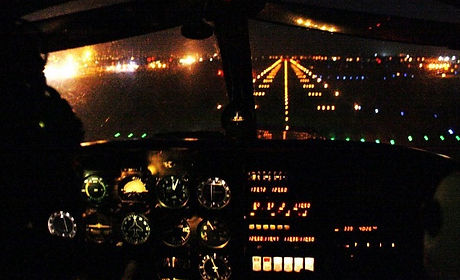OUR TRAINING
ALHSkytrain offers some of the best training possible, with our highly skilled flying instructors sharing their experience with students to give them priceless experience, guiding them to become a safe, efficient and effective pilot. We provide training on single and multi engine piston aircraft. Below is a summary of the licenses and validations that we provide.

EASA PPL
The EASA PPL(A) is the fundamental starting point of any pilot, teaching you how to safety operate a single engine piston aircraft in accordance with Civil aviation standards.
To obtain an EASA PPL(A) you must have flown a minimum of 45 hour, 10 of which are solo hours whereby you are the Pilot in Command, and you must have passed 9 ground examinations along with a Radio-telephony practical exam.

EASA LAPL
The EASA-LAPL PPL(A) is very similar the EASA PPL(A), requiring you to have passed 9 ground examinations along with a Radio-telephony practical exam, however you are only required to complete a minimum of 30 hours, 6 of which are solo whereby you are the pilot in command. The Light Aircraft's Pilot’s License does not contain or include any aircraft type/class ratings which need renewing on annually, however you are required to maintain a stated minimum number of flying hours.

NPPL
The National Private Pilot License is available for people wishing to fly microlights and our non-EASA registered aircraft. The NPPL can only be used on UK-registered aircraft inside UK airspace, also you can add class ratings to the NPPL to allow you to fly microlights, self-launching motor gliders (SLMGs) and simple single-engine aeroplanes (SSEAs).

IR(R) RATING
The instrument Rating restricted allows you to fly in weather conditions that are lower than the prescribed visual meteorological conditions. The rating is designed to provide pilots with the skills to operate an aircraft in weather below VMC minima, or land an aircraft in deteriorating weather conditions, making use of instrument approaches. The training consists of a minimum of 15 hours, including 10 hours flying solely by reference to the aircraft's instruments.

NIGHT RATING
Holding a Night Rating allows you to fly during the hours of 'official night'. This rating can be invaluable if you become unable to fly and become delayed. A minimum of 5 hours flying training must be completed, which include at least 3 hours of dual flight, a one-hour dual navigation exercise, and five solo take offs and landings.

MEP RATING
The Multi Engine Piston rating is an extension of your PPL Single engine piston rating which allows you to pilot an aircraft with more than one engine. During the course, you will learn the generic and specific skills required to operate a twin engine aircraft during normal and no-normal (asymmetric) flying conditions.



